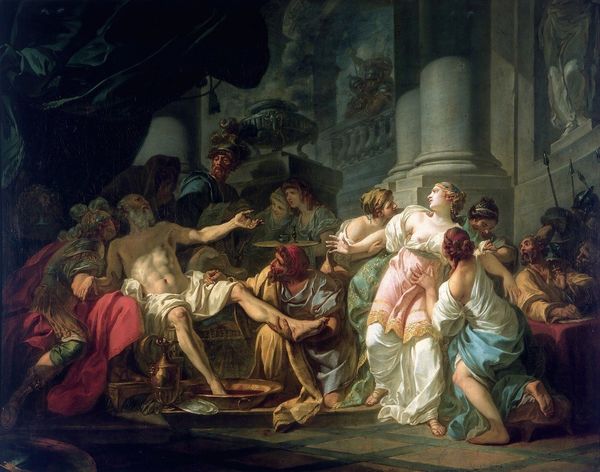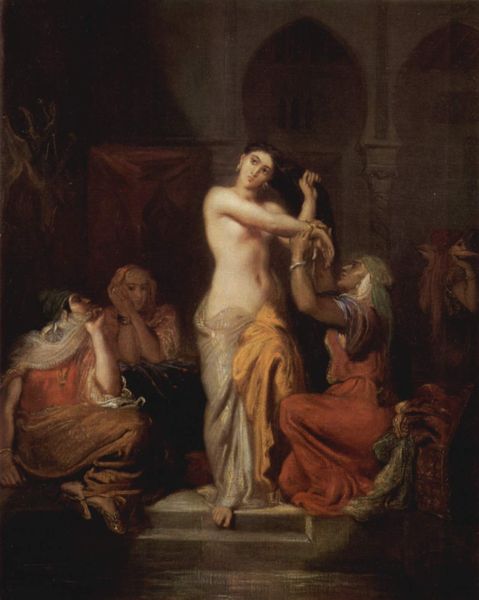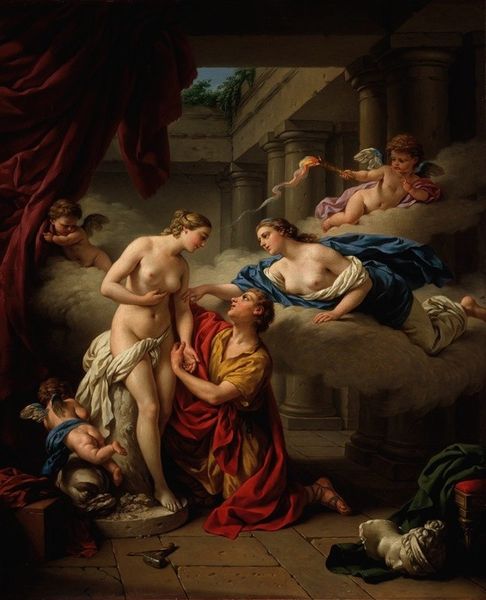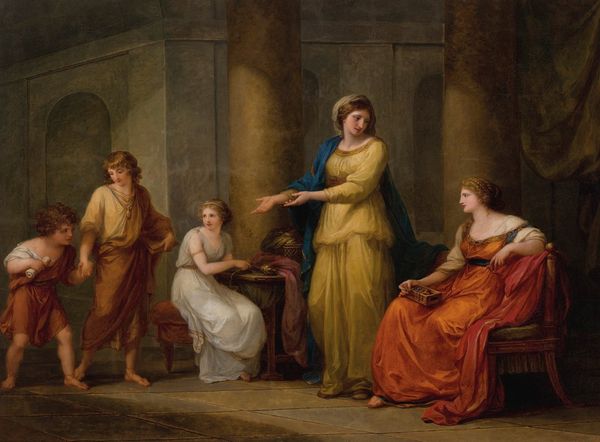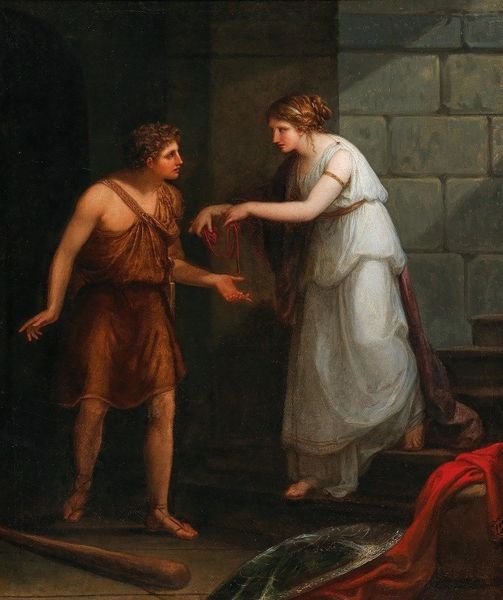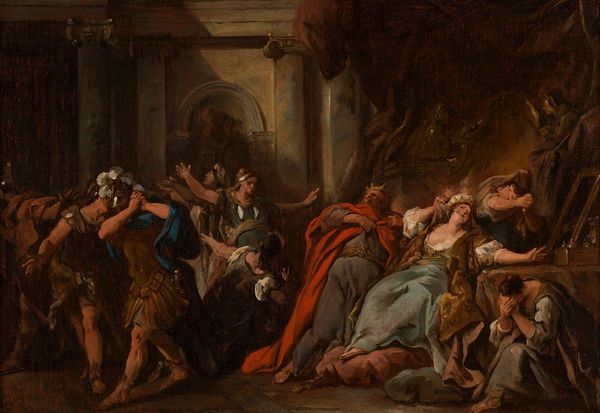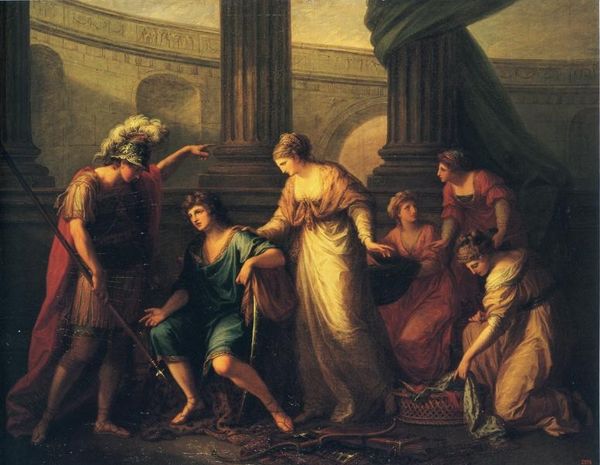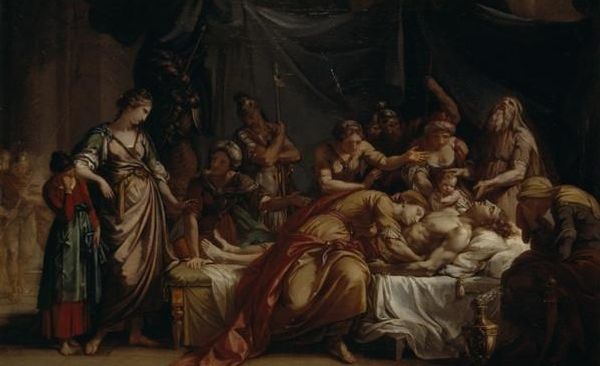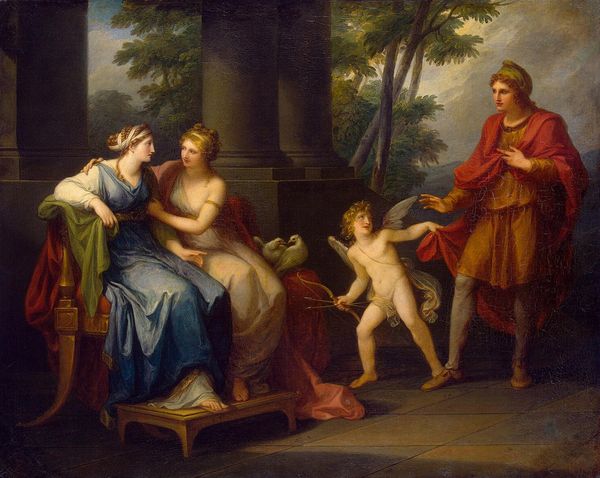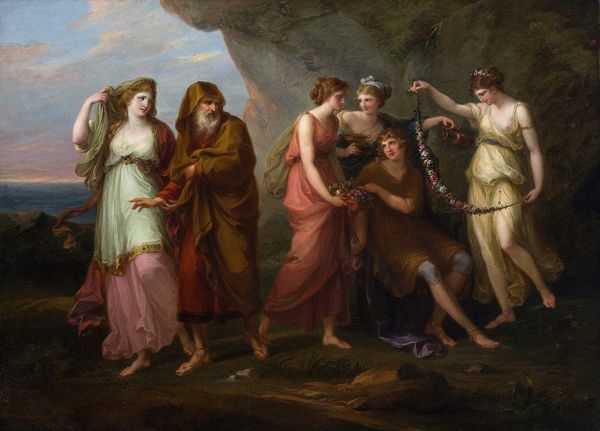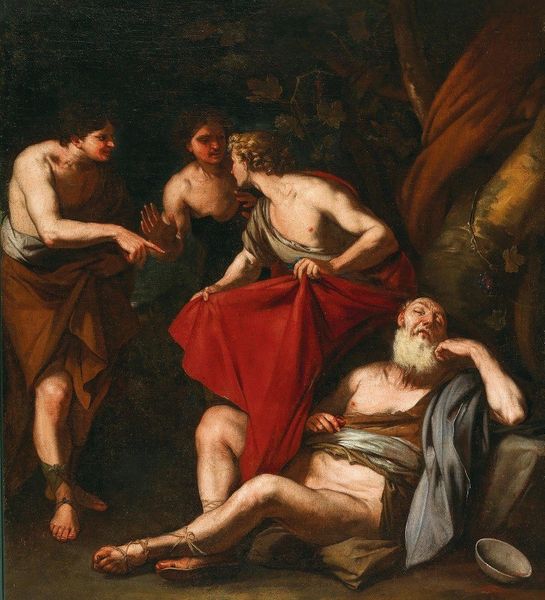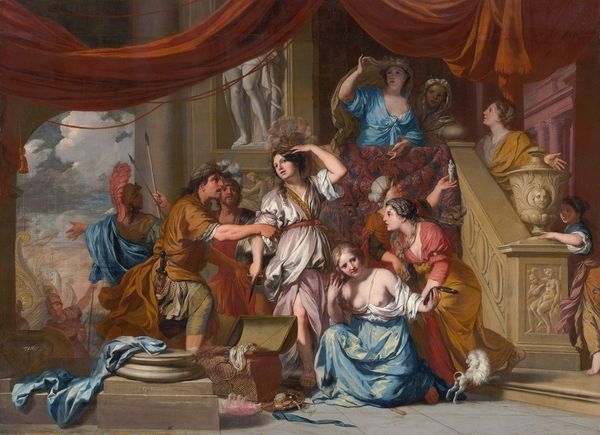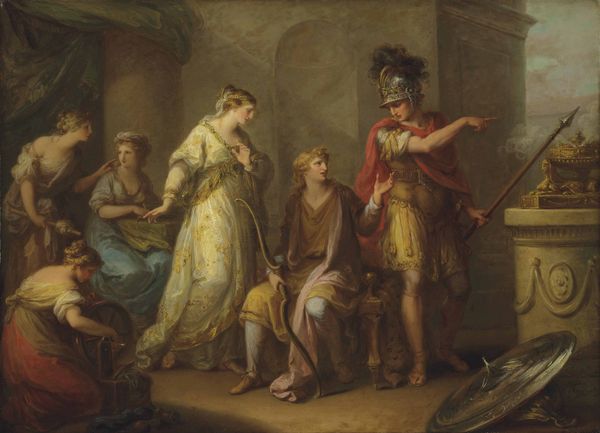
Dimensions: support: 765 x 622 mm
Copyright: CC-BY-NC-ND 4.0 DEED, Photo: Tate
Curator: John Hamilton Mortimer's painting, "I. The Hero Decides to Seek his Fortune", presents a compelling scene. Editor: It feels like a pivotal moment, doesn’t it? The tension between stillness and impending action is palpable in the very structure of the composition. Curator: Absolutely. Mortimer painted this work sometime in the 1770s, when ideas about heroism were deeply intertwined with social mobility and personal destiny, a theme ripe for examination through the lens of class and aspiration. Editor: I’m struck by how the linear forms of the figures contrast with the shadowy background. The artist’s play with light emphasizes the emotional weight on the hero’s face as he prepares to leave. Curator: Indeed, and the varied reactions of those around him—some supportive, others perhaps envious—reveal the complex dynamics of a society grappling with shifting social structures. Editor: The painting becomes an intersectional narrative about ambition and its discontents. Curator: Exactly. It provokes thought about who has access to the hero's journey and what barriers exist. Editor: It’s the strategic arrangement of elements, the play of light and shadow, which really amplify that tension. A fascinating demonstration of form mirroring content.
Comments
tate 6 months ago
⋮
http://www.tate.org.uk/art/artworks/mortimer-i-the-hero-decides-to-seek-his-fortune-n05837
Join the conversation
Join millions of artists and users on Artera today and experience the ultimate creative platform.
tate 6 months ago
⋮
Attracted by the growing Romantic fashion for giving outlaws and anti-establishment figures heroic stature, Mortimer produced two complementary sets of narrative paintings entitled 'The Progress of Vice' (1774, now lost) and this, 'The Progress of Virtue' (1775). They continue the tradition of painted moral tales begun by Hogarth in the early 1730s, but lack his biting satire on contemporary society. By dealing with 'idealized' vices and virtues embodied in generalized heroic characters, they conform to the canons of history painting. Their simple moralizing tone and elevation of domestic virtues, however, is more akin to the sentimental genre of Greuze in France, and to early nineteenth century historical painting. Gallery label, August 2004

